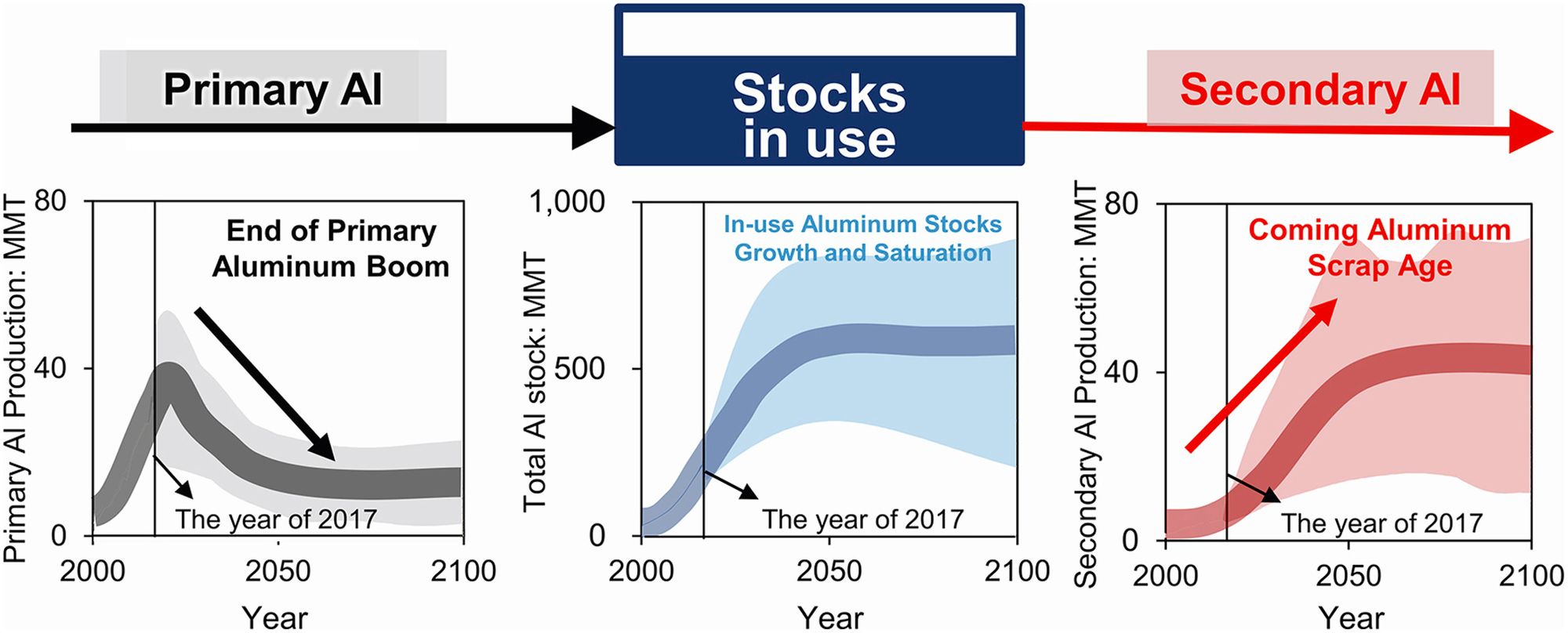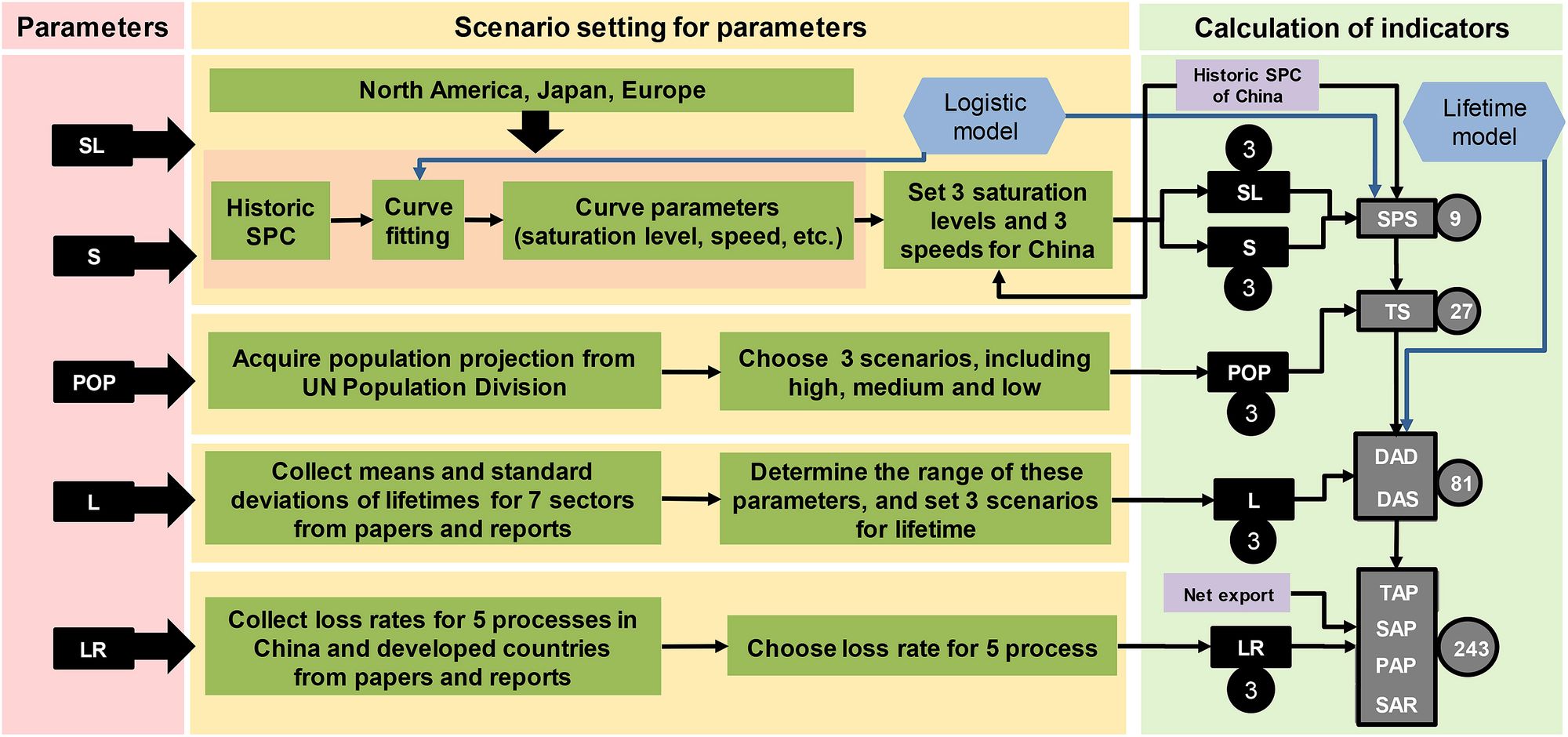Dai, Min; Wang, Peng; Chen, Wei-Qiang*; Liu, Gang
Journal of Cleaner Production 2019 226, 793-804. DOI: 10.1016/j.jclepro.2019.04.029
Abstract
China has dominated the global aluminum production and consumption in the past few decades, therefore it is of particular interest to stakeholders in China and worldwide to explore whether such aluminum boom will continue or not in China. This study applies a scenario-based dynamic material flow analysis to quantify the stocks and flows along the anthropogenic aluminum cycle in China from 1950 to 2100. Potential future changes of significant parameters are explored and identified, and around 250 sets of scenario results (including all flows, stocks, and losses along the aluminum cycle in China) are obtained for the comprehensive scenario analysis. The main findings include: (1) China's primary aluminum production will peak at around 40 MMT (million metric tons) at around 2025, leading to the end of primary aluminum boom that started from the early 1990s; (2) Domestic aluminum demand will continue to increase to more than 40 MMT due to the growing accumulation of in-use stocks in meeting future societal needs; (3) China's old aluminum scrap generation will increase dramatically (around 0.8 MMT per year) soon and secondary production will account for more than 60% of aluminum production after 2050s in almost all scenarios. Thus, there will be a rapid shifting in production capacity from primary to secondary routes. In this context, the corresponding policy should focus more on the urban mining, and improvement of end-of-life management systems and sorting technologies. These scenario results also reveal key opportunities and barriers in the process. Notably, it becomes increasingly important for China's and the global aluminum industry to investigate China's future role in the global market of primary and waste aluminum products.
Graphic Abstract

Scenarios setting of the parameters and calculation of the indicators involved in the future aluminum cycle.
